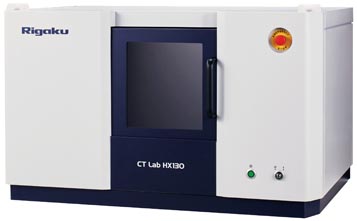CARBONATE POROSITY ANALYSIS - SEGMENTATION COMPARISON
About the sample: Carbonate
Carbonate is a clastic sedimentary rock composed mainly of carbonate minerals such as calcite, aragonite, and dolomite. Most carbonate rocks come from the accumulation of bioclasts created by calcareous organisms such as the shell of snails. The rest of the organisms decompose over time and leave void space. X-ray CT (computed tomography) is one of the very effective techniques to visualize and quantify the void space.
Analysis procedure
- In this example, a carbonate core (Edwards Yellow) was scanned using a micro-CT scanner, CT Lab HX.
- The resulting image was segmented into solid and void space using three segmentation techniques.
- The porosity was calculated from the three void segmentation results, and the pros and cons of each segmentation technique were discussed.
1. CT scan
The middle part of the Edwards Yellow 1/3" core sample was scanned to produce the 3D grayscale CT image. A 3D rendered CT scan is shown on the right.
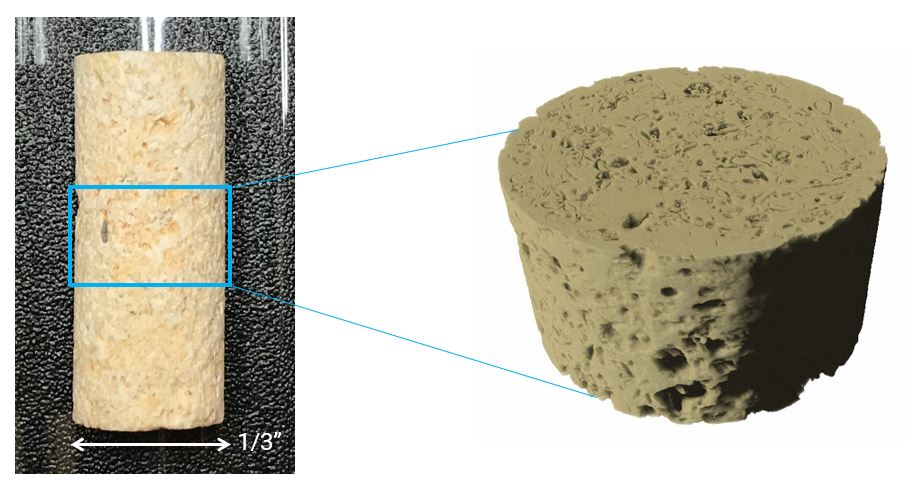
2. Image segmentation
The Edwards Yellow CT image was segmented into solid and void space using gray-level thresholding, histographic thresholding, and deep learning techniques. The segmented solid phase is colored red.
Although the contrast between the solid and void is high, because of the beam hardening artifact, the simple thresholding does not segment the solid phase correctly. Histographic segmentation can compensate for the artifacts well. Deep learning segmentation is not simply based on the gray level but considers the shape, size, and location of each phase. As a result, deep learning also compensates for the artifacts well.
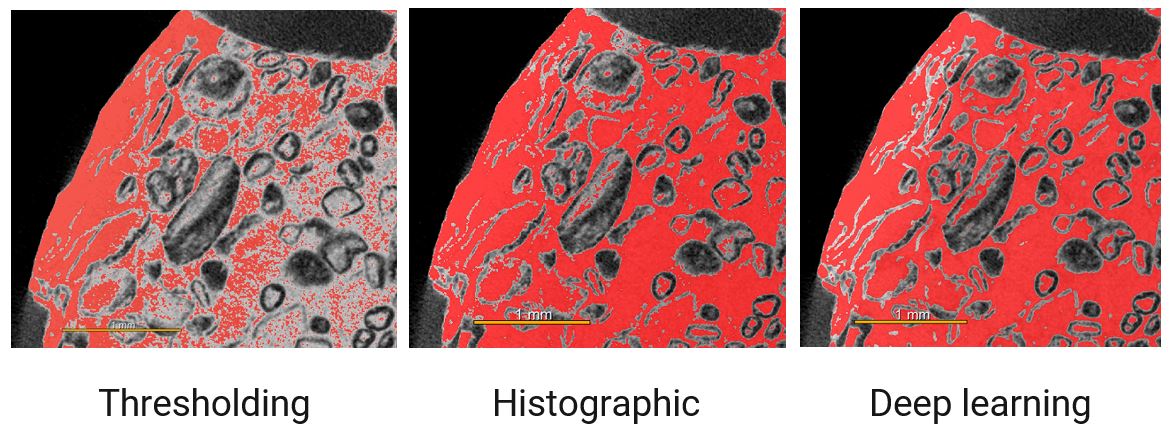
3. Porosity comparison
The porosity is calculated as the volume fraction of the void space:
- Thresholding segmentation - 72.9 vol%
- Histographic segmentation - 34.9 vol%
- Deep learning segmentation - 34.7 vol%
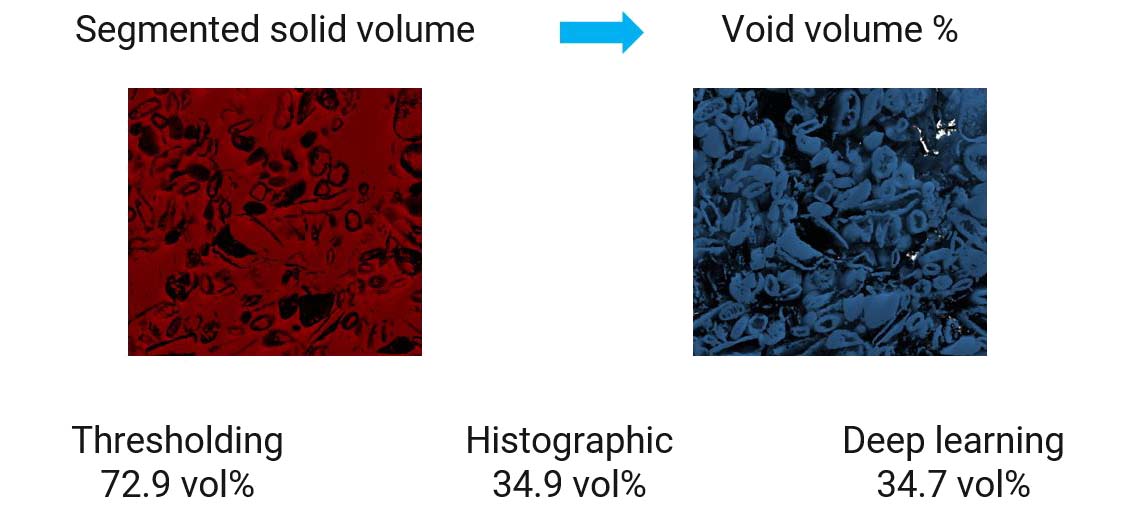
The simple thresholding technique grossly overestimates the porosity because of the inaccurate segmentation. Those results show that it is essential to segment the CT images accurately and compensate for artifacts as necessary to obtain accurate quantitative analysis results.
Another thing to note is that the histographic and deep learning techniques resulted in similar numbers, but they are different. This tells us that it is important to use the same segmentation technique when comparing multiple samples. Not only the segmentation technique but sample size and scan conditions should be kept the same to obtain consistent results.
More Geological Application Examples
Watch an on-demand webinar about X-ray CT geological applications.
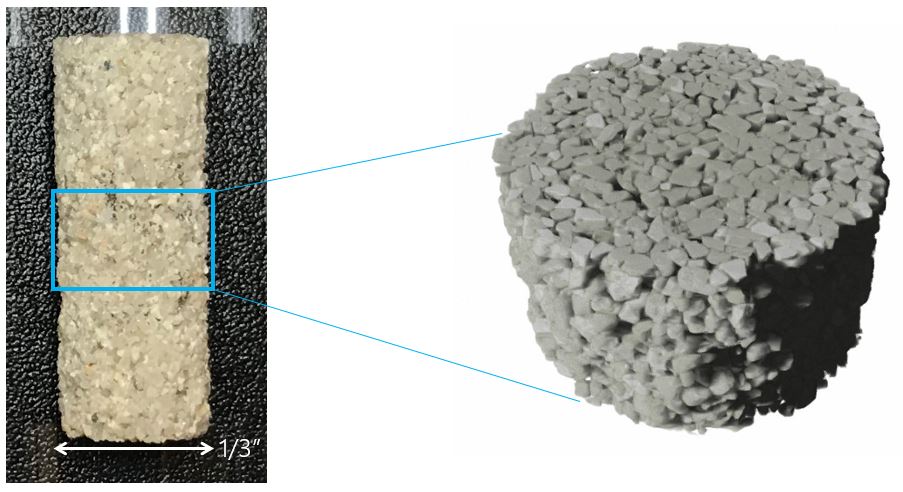
Sandstone grain size analysis
Application Note
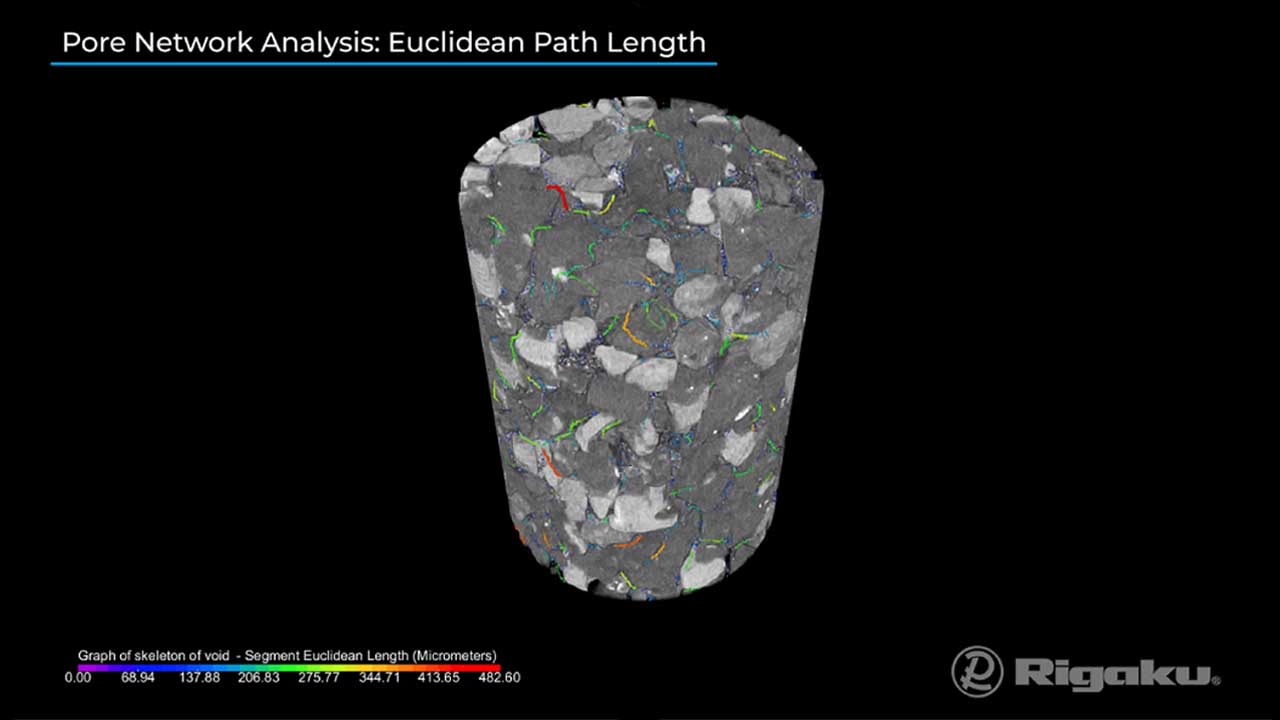
Sandstone pore network analysis
Application Note & Video
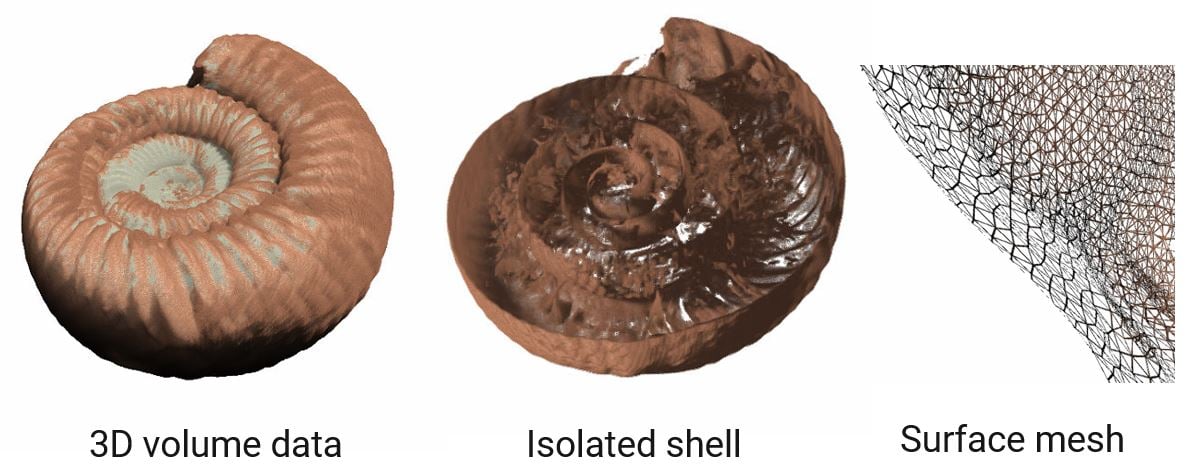
Ammonite fossil scan
Application Note

Carbonate porosity analysis segmentation comparison
Application Note
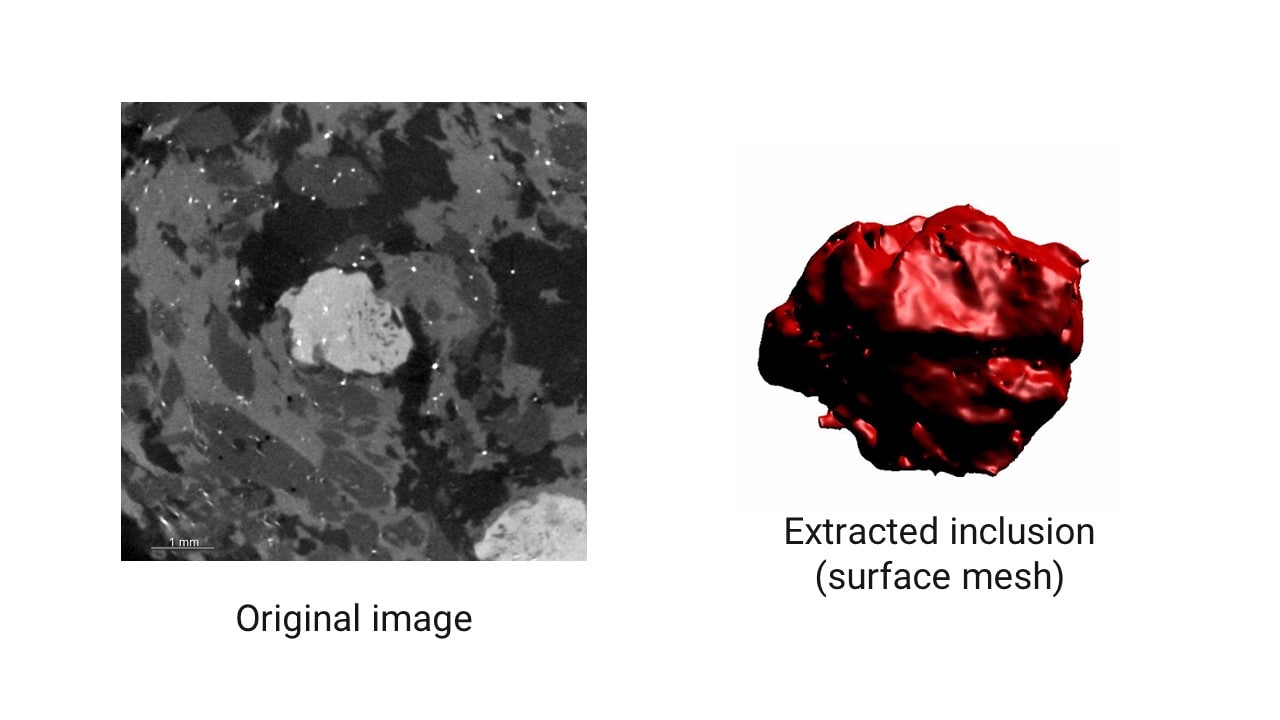
Granite phase fraction analysis
Application Note
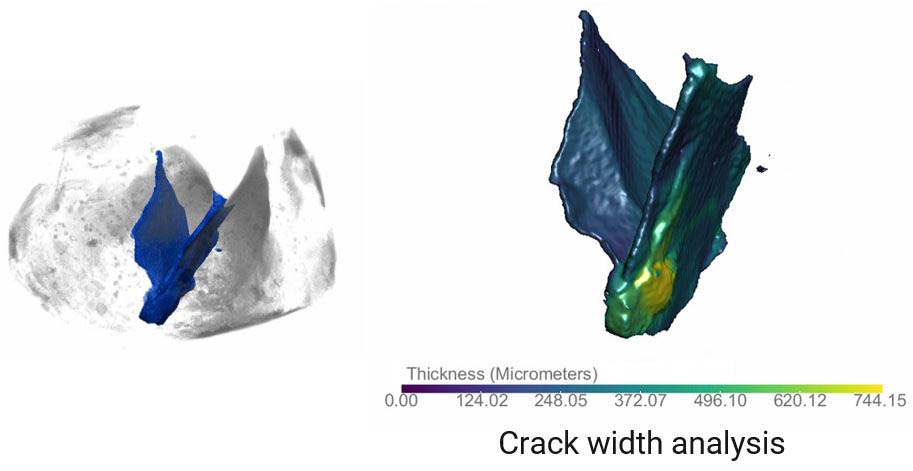
Rock crack analysis
Application Note
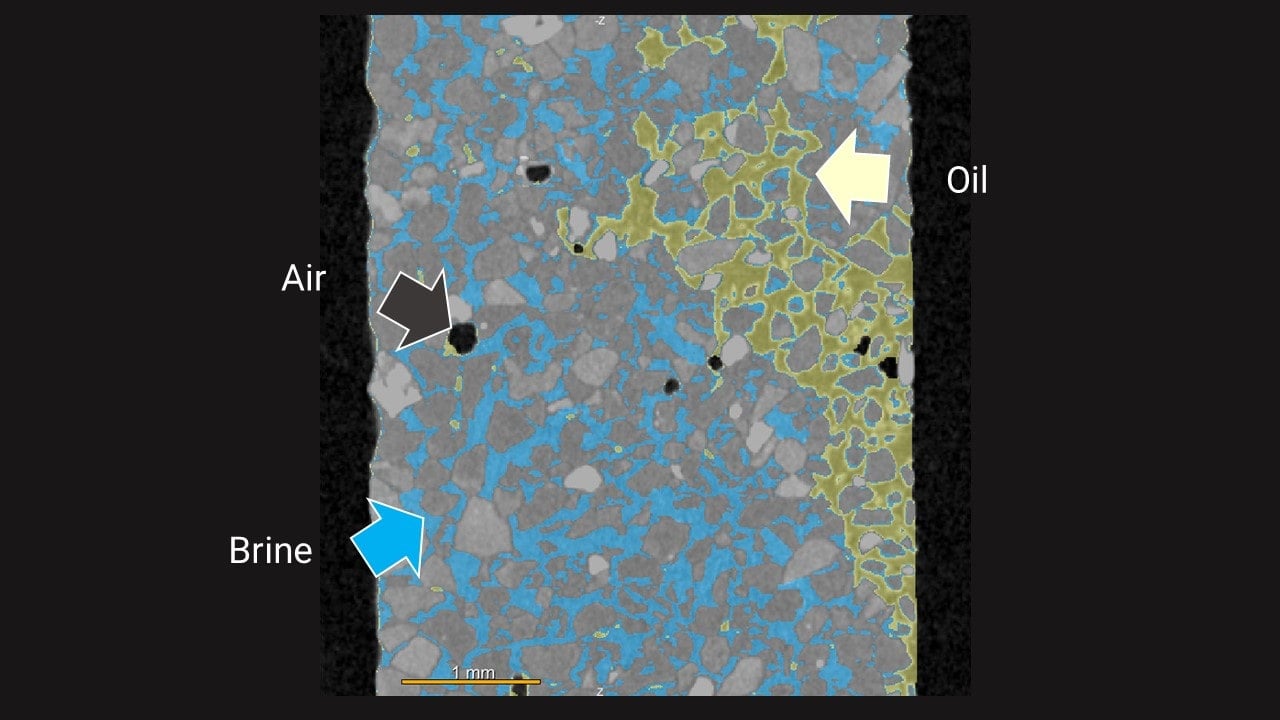
Sand oil and brine segmentation
Application Note
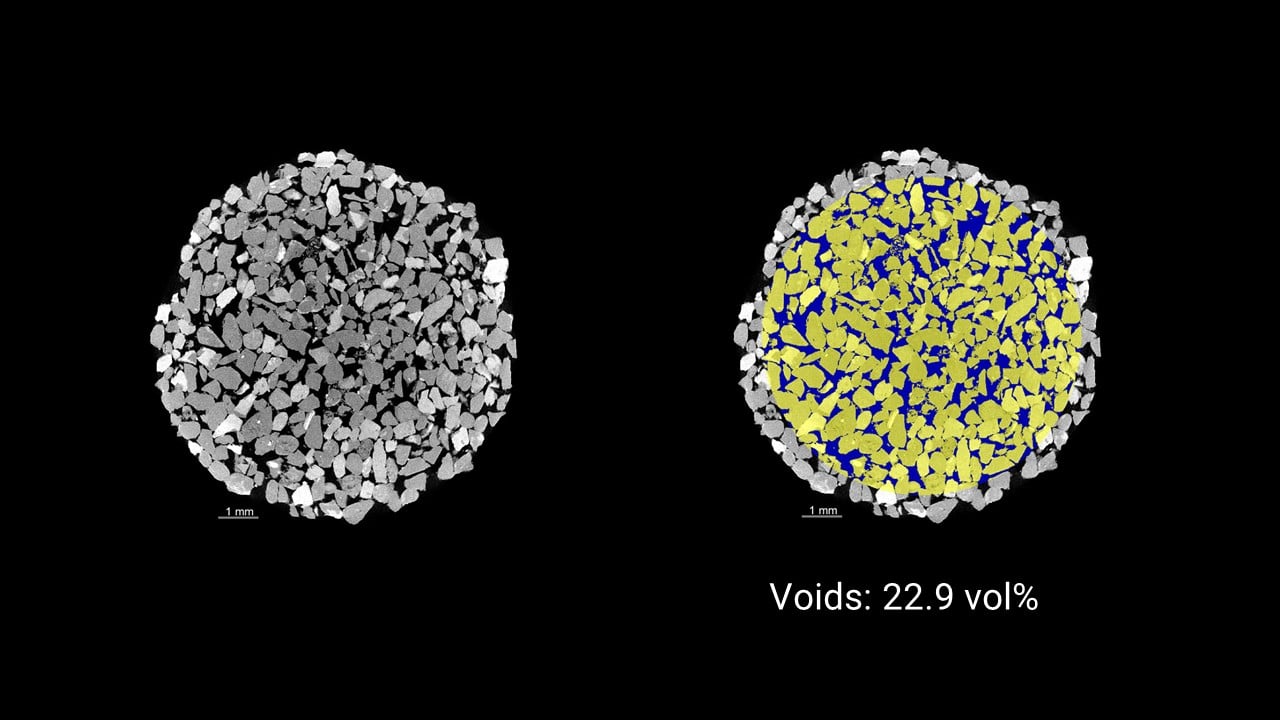
Sandstone porosity comparison
Application Note


